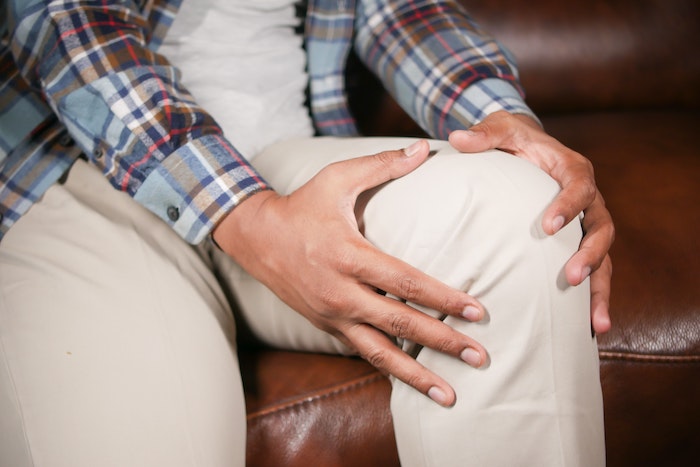
Your Guide To Swollen Knee (Joint Effusion) Treatment
While we all have a small amount of fluid in our joints, excess fluid can pose a problem. Whether it’s the result of injury, infection, or a medical condition, additional fluid around the knee can lead to the knee becoming swollen and painful or tender. This can disrupt your daily life as it impacts the way you move your body, from the simplest of movements through to participating in sport. And that’s not what you need! What you do need is fluid on the knee treatment, and there are options available to help.
This blog discusses what joint effusion is, what can cause it, its symptoms, and a variety of fluid on the knee treatments. For further information, personalised advice, or to book an appointment, contact our team at Northern Spinal today.
What Can Cause Joint Effusion?
Joint effusion is when a joint accumulates too much fluid, and is also known as swollen knee or water on the knee. Causes of joint effusion range from minor injuries through to more serious underlying conditions. Causes can include:
- Repetitive injury
- Torn ligament or cartilage (meniscus tear)
- A bacterial infection
- Prepatellar bursitis
- A broken bone
- Osteoarthritis or rheumatoid arthritis
- Gout or pseudogout
- Cysts or tumours
What Are The Symptoms of Joint Effusion?
Joint effusion typically affects just one knee. The affected knee may:
- Feel heavier and look puffier compared to your other knee
- Have swelling and redness of the skin around the kneecap
- Feel stiff, causing you to have difficulty straightening or bending the affected leg
- Feel sore and tender, especially if you put weight on it
- Feel warmer than your other knee
What Can Increase My Risk Of Joint Effusion?
Anybody can put excess strain on their knee, sometimes without even realising they’re doing so. However, there are some factors which can increase your risk of joint effusion, such as:
- Age— The probability of experiencing knee pain increases as you age
- Playing sport— Such as basketball and soccer, which can strain the knee more easily
- Work— People who spend time on their knees at work such as carpenters and gardeners are the workers most at risk
- Weight— Carrying additional weight places stress on the knee joints
- Health conditions— Such as osteoarthritis and rheumatoid arthritis which can cause knee problems
What Fluid On The Knee Treatments Are Available?
When you’re looking for fluid on the knee treatment, you first want to uncover the source of the excess fluid. To do so you will need to see your doctor, who can perform a range of tests to determine why your knee is swollen and what type of fluid may be accumulating beneath it. The cause of your joint effusion can impact the course of treatment you undertake.
In many cases, simple treatments such as the RICE method can reduce knee pain and get you back on your feet. If pain persists, see your doctor for further evaluation.
The RICE Method
RICE stands for:
Rest— Once you become hurt, stop the activity you’re doing and rest as much as possible for two days. Not resting can increase any damage done and delay your recovery, so you should avoid putting weight on the injured knee and leg for 24 to 48 hours.
Ice— Cover an ice pack in a light, absorbent towel and place it on your knee for 15- 20 minutes every two to three hours for the first 24 to 48 hours following your injury. If you don’t have an ice pack, you can also use a bag of frozen peas or corn.
Compression— Wrapping the affected area with a medical bandage will help to prevent swelling. Wrap it snugly but not too tightly, and if you notice your skin turning blue or feeling cold, numb, or tingly, loosen the bandage immediately.
Elevation— Raise the affected area above the level of your heart. This may include lying down on a couch and propping your knee up on several pillows. Ensure you keep the injured area elevated as often as possible, even when you’re not icing it.
Physiotherapy may improve the functionality and strength of your knees. Whether the cause of your swollen knee is from an acute injury or a long term condition, techniques such as soft tissue massage, joint mobilisation, and the use of braces or orthotics may be useful for you.
Other treatments can include prescription oral pain medication, an oral corticosteroid, or another type of steroid which can be injected directly into the knee joint.
Depending on the cause of your swollen knee, surgery and other procedures may be options to consider. Arthrocentesis removes fluid from the knee, while arthroscopy can remove loose tissue in the knee. In other cases, knee replacement surgery may be the best option for you.
Looking For Fluid On The Knee Treatment?
If you’re in the Reservoir area or its surrounding suburbs and you need fluid on the knee treatment, our experienced team is happy to help. Our allied health team includes osteopaths, chiropractors, physiotherapists, and podiatrists, and we want nothing more than to see you back up and on your feet as soon as possible. To book an appointment, contact our team at Northern Spinal today.



